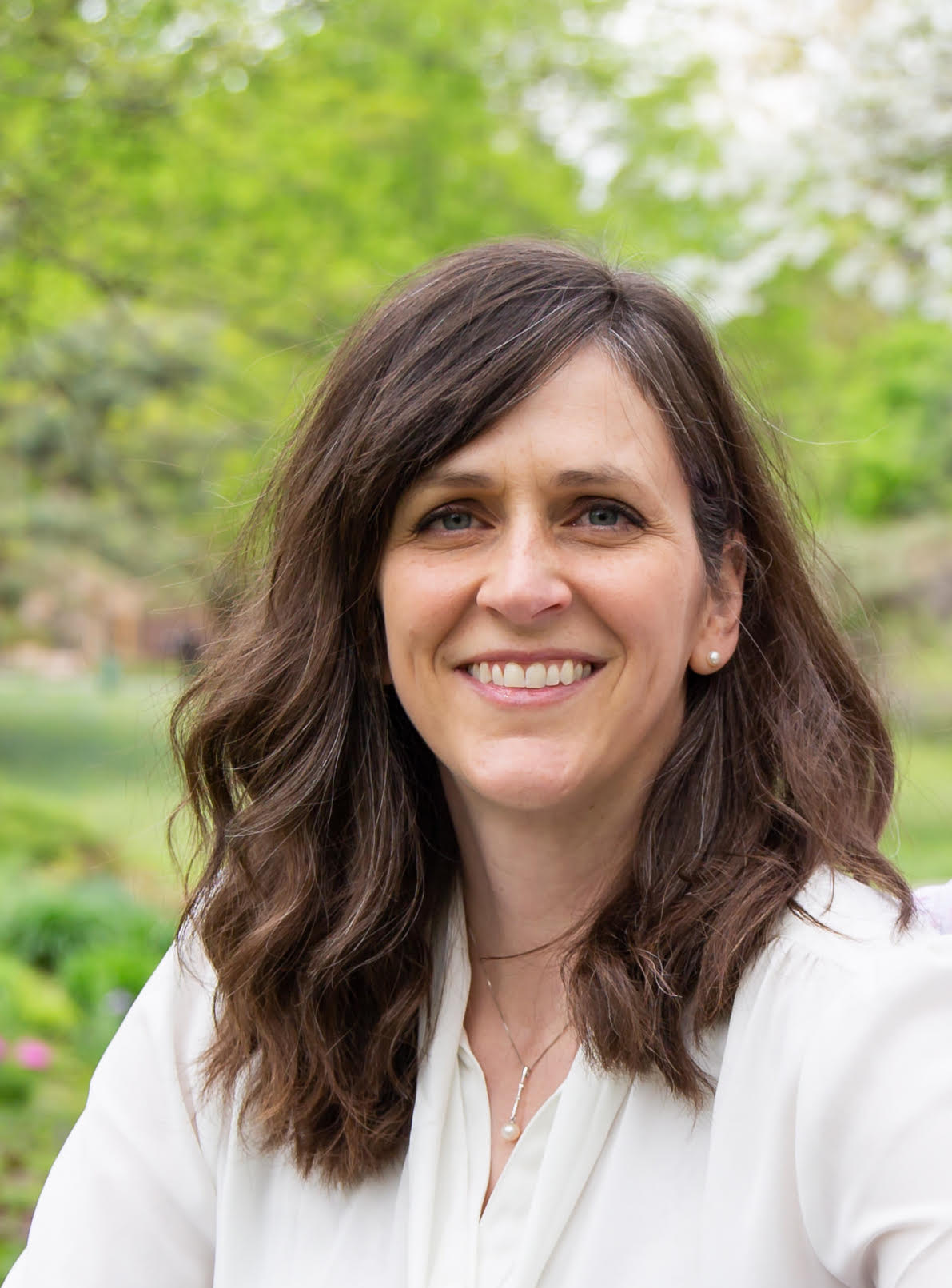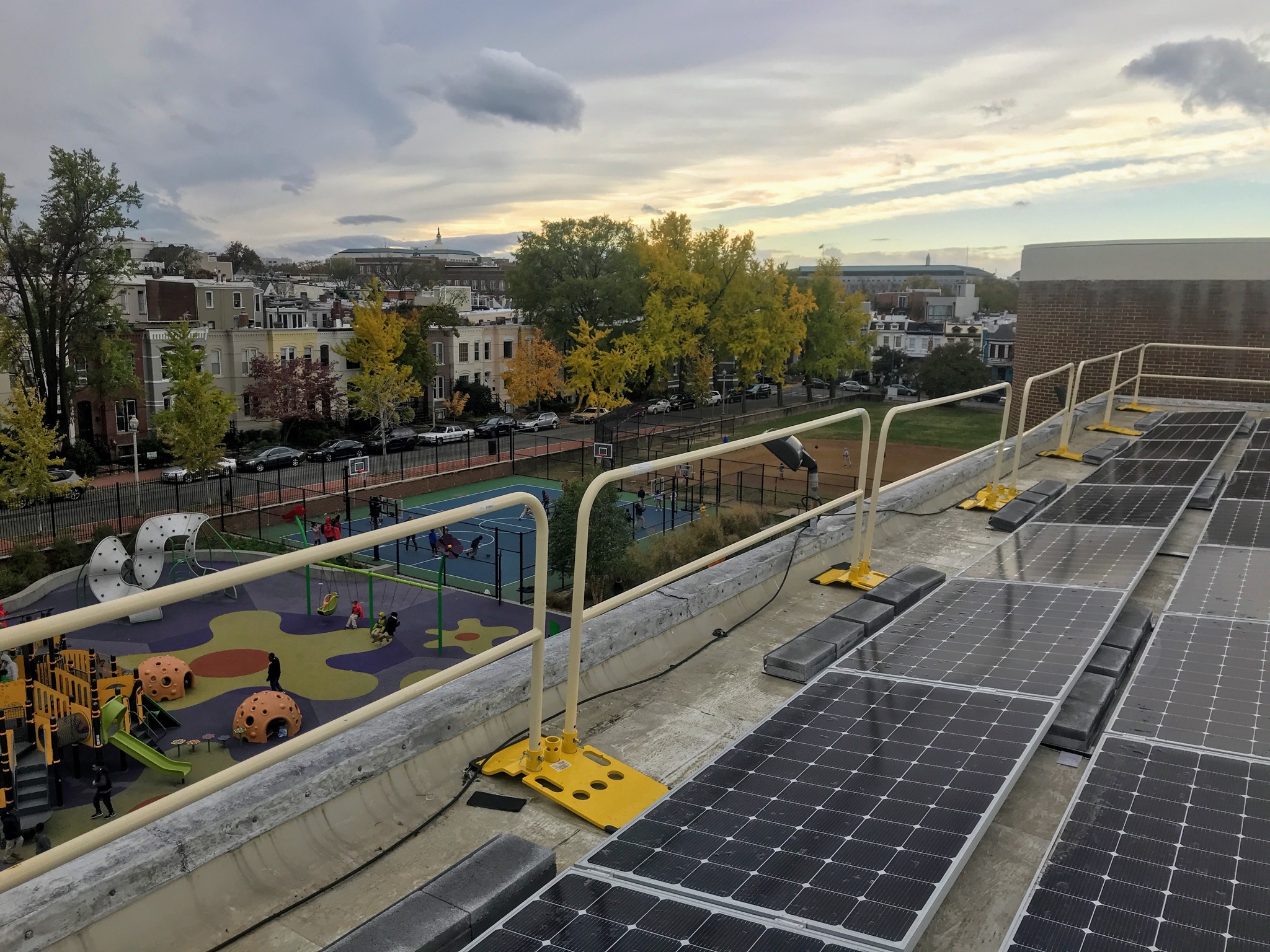XMNR alum Sally Parker charts new career course for most impact in her community
November 23, 2021

By Brian Indre
For every cohort that comes through Virginia Tech’s Executive Master of Natural Resources (XMNR) program, there is always a number of students who are looking for a career change. The broad range of topics covered in the XMNR program has exposed students to the expansive possibilities a career in sustainability can offer, leading many to contemplate their career choices.

Sally Parker, a 2014 XMNR graduate, is no stranger to changing jobs as a sustainability professional, and she isn’t shy to admit that when she feels like she is no longer able to make an impact in her position, it is time to move on.
After leaving the U.S. Marine Corps and moving back home to Illinois, Sally admits to not having put a lot of thought into what she might study in college. She recalls looking through the University of Illinois course catalog when landscape architecture caught her eye, and thinking that it would be a great mix of the natural world along with discipline and craft. Upon graduation from the University of Illinois at Urbana-Champaign, she would go on to pursue a career designing outdoor spaces for corporate campuses, home developments, and parks, for close to ten years.
Discovering a career path
“It turns out that, at one point, my mom gave me a copy of my career aptitude test that I had taken in high school, and the results pointed to interests in urban forestry, landscape architecture, and being a park ranger,” she said. “All the things that I had to be an adult to find out I was interested in.”
Interest for the natural world has always been there for Sally, and that’s why landscape architecture seemed like a great way to connect built spaces and nature. She jumped at an opportunity in Ventura, California, where she worked in the housing industry for several years as an assistant project manager for two landscape architecture firms. The housing bubble, which especially affected California, began to take form in 2007 and led to a devastating bust in the years that followed, ceasing construction and landscape projects. Feeling unfulfilled, Sally moved to Northern Virginia.
Sally subsequently worked in Virginia as a landscape architect for the Michael Baker Corporation for a little over seven years. “I moved to Virginia from California because that’s the place where I knew the most people, besides my hometown,” she said. “It turned out to be a sound professional decision, too, since the recession took longer to hit the Washington, D.C., area and was less intense overall due to the stability provided by government work.”
Projects for government installations and military bases kept her busy, but it was during this time that she felt her environmental impact could be greater elsewhere. “I wasn’t necessarily helping nature, and felt too limited by scope and budgets,” she said. Sally remembered feeling that there was a lack of understanding of how much impact a landscape architect could make with the connection of design and green development. Wanting to do more, Sally looked into graduate programs. She visited several XMNR class sessions in Arlington, Virginia, and enrolled in the program.

Following graduation, Sally pivoted from being a landscape architect to the Energy and Sustainability Liaison for Washington, D.C. public schools, and then moved to St. Louis, Missouri, where she is currently working for ABM Industries as the Energy Conservation Coordinator for client Boeing.
Taking on new, bigger challenges
With each career pivot, Sally has taken on new roles with a steep learning curve, and has even found herself as the sole sustainability person on the job. “I ignored the advice from a guest speaker we had during a class session, who said to be wary of any job where you will be the only sustainability person,” she said. “I learned that if you don’t have the ears of the decision makers, you are going to really struggle.”
“A lesson from the XMNR program that has stuck with me came from Bruce Hull on reframing an argument,” she said. “If you say a word that shuts people down, your intentions do not get through. You have to develop what words are at the root of what you do that are standardized, but then also be able to tweak key words that best relate to your audience’s interests until the connection is made.”
Before the XMNR program, Sally considered herself an amateur environmentalist, but by the end felt that she had a better understanding of sustainability issues from a global perspective and how to confront wicked problems. “I loved how the program was structured, starting with regional issues and then global. I was able to wrap my mind around the scale as it expanded. I didn’t have a lot of business experience, or international work, so the global economics exposure was huge for me.”
The program didn’t give us all the answers, Sally explains, but it gave us the tools and the exposure to thinking about problems. “Since there is no one way to be a sustainability person, I think the experience made me more malleable in order to conceptualize solutions,” she said.
“One of the reasons that I took the Boeing job was because I had a gap in my experience for building management, and that is something that I wanted to grow,” she said. Improving HVAC systems for heating and cooling, and changing lights to LEDs, are intuitive first-step decisions toward energy sustainability. But her role as energy analyst for Boeing has her learning a lot about manufacturing and how to save money and energy on a much larger scale than her past experiences. “Trying to wrap your mind around how to make boilers and chillers the size of swimming pools, or giant arc heaters that test how materials would return back from space, more energy efficient is a challenge.”
Sally says that she ran up against the misconception that you need to be an engineer for sustainability positions for a facility placement, where energy is at the forefront. Reflecting back to her phone interview for her current position, she made it clear that she wasn’t an engineer, but pitched herself as a leader to help change attitudes and behaviors, and that got her the job.
Making an impact in her community
Wherever Sally ends up, she will be making a positive impact on her community. She mentions her current passion for regenerative land renewal in historic redlined areas of St. Louis City and County. There is a huge patchwork of abandoned and teardown properties just sitting there. “How can we treat this land as an amenity and not a blight?” she asks. “But it would have to be written into an organizational structure that investments are designed thoughtfully, with community leaders driving the planning and implementation phase of land and renewable energy investments. Problems can’t be solved from the outside, but resources should come from all over.”


